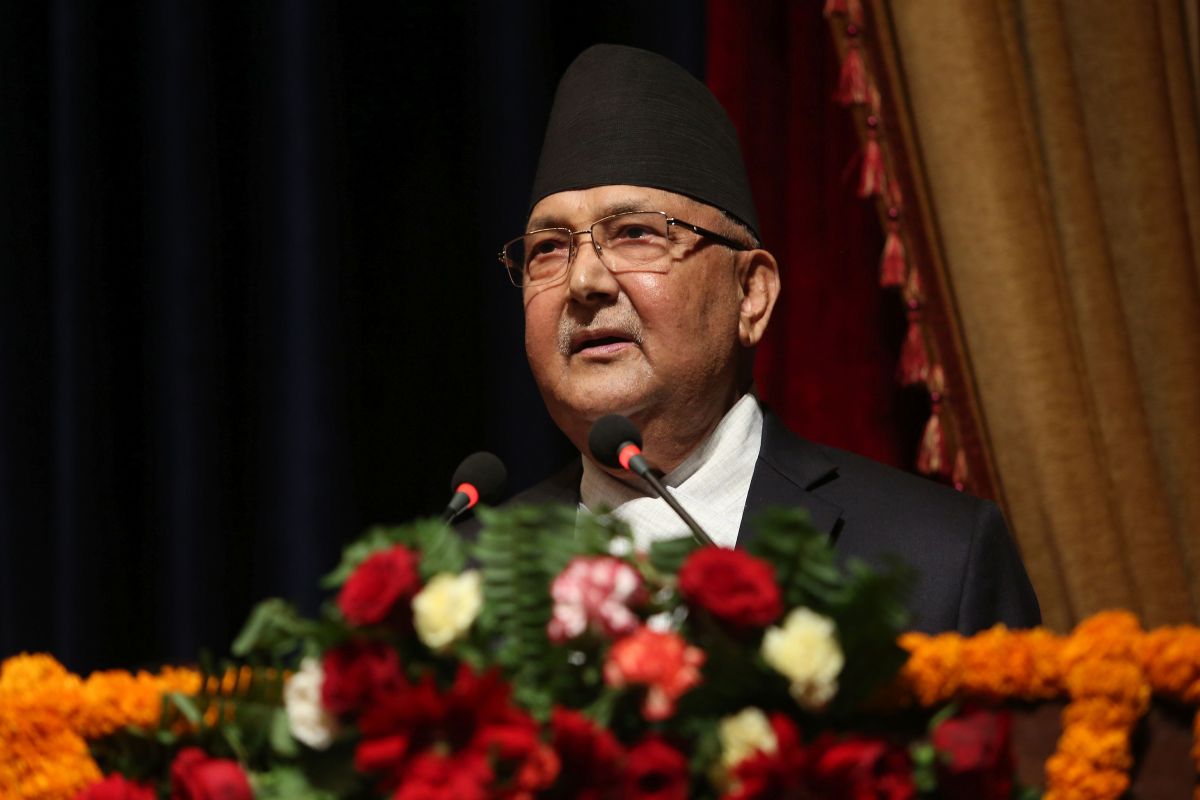Nepal, Qatar agree to increase cooperation in various sectors
The governments of Nepal and Qatar on Wednesday reached agreements on bilateral cooperation in various sectors.
Of a piece with the apparent cooling off of relations was the message conveyed to Mr Gyawali by the Ministry of External Affairs, specifically that boundary talks with the government in Kathmandu are unlikely until it amends the Oli government’s unilateral initiative to incorporate areas that India claims as its own.

Nepal Prime Minister K.P. Oli (File Photo: IANS)
For all the grandstanding in New Delhi, the rough edges in bilateral relations did impinge on the recent visit of Nepal’s foreign minister, Pradeep Gyawali, to India. Chief among these was the inclusion of three Indian cities in the recently choreographed map of Nepal, described on this side of the border as cartographic aggression.
Of a piece with the apparent cooling off of relations was the message conveyed to Mr Gyawali by the Ministry of External Affairs, specifically that boundary talks with the government in Kathmandu are unlikely until it amends the Oli government’s unilateral initiative to incorporate areas that India claims as its own.
Central to the raging tension, therefore, are the disputed territories. Yet these have been shown to be part of Nepal; the international border is too sensitive an issue to be settled with a stroke of the prime ministerial pen. And so it has been, going by the latest map of Nepal. “Kathmandu wants the bilateral relationship to go as if nothing has happened.
Advertisement
That cannot happen,” has been India’s forthright retort, advanced in the presence of the neigbouring country’s foreign minister. Mr Gyawali’s visit did convey the message that bilateral relations were inching towards normality.
Both sides have agreed that India was far more accommodative as regards the Covid vaccine, pledging to despatch the first package within a few weeks.
A striking feature of Gyawali’s visit was that the guest left the host country without calling on the Prime Minister. Mr Narendra Modi’s preoccupation with the vaccine was the official explanation that was proffered, but there is little doubt that this was a snub of sorts.
Not the least because Nepal’s Prime Minister, KP Sharma Oli, had regarded the boundary talks as the primary reason for Gyawali’s visit, a compulsion that has been emphasised by the foreign minister Arguably, the second reason must have been that India is loath to be viewed as taking sides, given the political uncertainty and infighting at the helm in Kathmandu.
The equation between Oli and Prachanda is far from cordial, to say the least. Who actually pulls the strings in the Himalayan country has, over the past few weeks, been a matter of conjecture. Gyawali has rebutted the charge of unilateralism, asserting that India had advanced its political map in November 2019.
While China had recently sent a delegation to Nepal to test the murky waters, India has thus far steered clear of the bickering at Kathmandu’s helm of governance. Though Gyawali has spoken against “foreign interference”, the fact remains that a high-level political delegation from China was in Kathmandu for three days in an attempt to settle the conflict within the Communist leadership.
The flirtation between Nepal and China has been noticed, as indeed has its ambassador’s interference in Nepal’s domestic affairs. Noticed no less was Nepal’s postearthquake preference for Chinese assistance, peremptorily rejecting the airborne package from India. This is not to forget the prolonged border blockade.
Advertisement